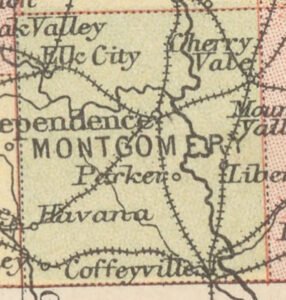Biography of John Newton
John Newton, a resident of Sycamore Township since 1884, was born in Harrison County, Ohio, on March 14, 1842. He spent his early years in Tuscarawas County before moving to Montgomery County, Kansas, following his service in the 11th Ohio National Guard during the Civil War. A dedicated farmer and community member, Newton served on the school board and as a road overseer, and maintained lifelong affiliation with the Republican Party and the Grand Army of the Republic. He was the son of Isaac and Rachel Newton and part of a large extended family rooted in Ohio. Newton married Mary E. Balitt in 1869, and together they raised a family of six children, with descendants continuing to reside in or near Montgomery County.


